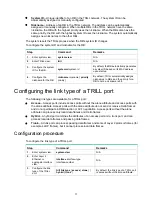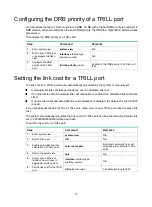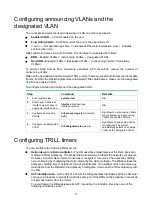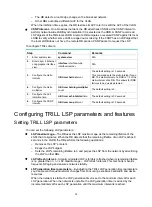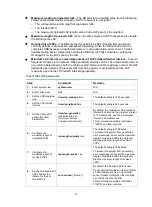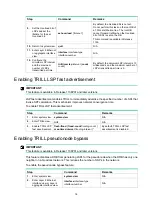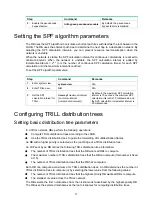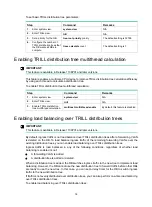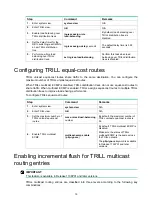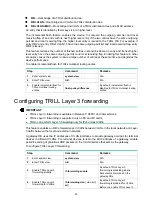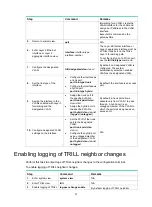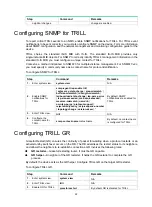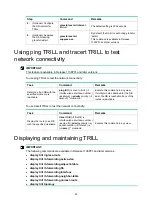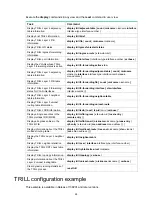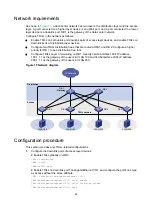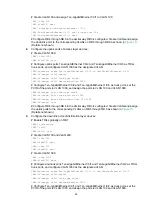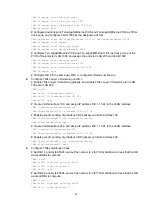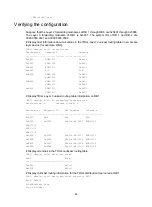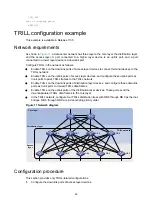
14
{
The RB detects a root bridge change on the broadcast network.
{
Other RBs advertise a different AVF for the VLAN.
When the inhibition time expires, the RB restores its AVF role if it is still the AVF of the VLAN.
•
CSNP
interval
—On a broadcast network, the RB advertises CSNPs at the CSNP interval to
perform network-wide LSDB synchronization if it is elected as the DRB. A CSNP records all
LSP digests of the RB's local LSDB. A remote RB compares a received CSNP against its local
LSDB to verify whether some LSPs are aged out or missing. If the CSNP has an LSP digest that
the local LSDB does not have, the remote RB sends a PSNP packet to request the LSP.
To configure TRILL timers:
Step Command
Remarks
1.
Enter system view.
system-view
N/A
2.
Enter Layer 2 Ethernet
or aggregate interface
view.
interface
interface-type
interface-number
N/A
3.
Configure the Hello
interval.
trill
timer
hello
interval
The default setting is 10 seconds.
This command sets the Hello interval for an
RB. The Hello interval of a DRB is 1/3 of the
Hello interval of an RB. This allows for DRB
failures to be quickly detected.
4.
Configure the Hello
multiplier.
trill
timer
holding-multiplier
count
The default setting is 3.
5.
Configure the AVF
inhibition time.
trill
timer
avf-inhibited
time
The default setting is 30 seconds.
6.
Configure the CSNP
interval.
trill
timer
csnp
interval
The default setting is 10 seconds.
Configuring TRILL LSP parameters and features
Setting TRILL LSP parameters
You can set the following LSP parameters:
•
LSP maximum age
—The RB uses the LSP maximum age as the remaining lifetime of the
LSPs that it originates. When the RB detects that the remaining lifetime of an LSP reaches 0
seconds in the LSDB, the RB performs the following operations:
{
Removes the LSP's content.
{
Keeps the LSP's digest.
{
Sets the LSP's remaining lifetime to 0 and purges the LSP from the network by advertising
the LSP to other RBs.
•
LSP refresh interval
—A locally originated LSP is forcibly refreshed when its remaining lifetime
is no greater than n: n = LSP maximum age – LSP refresh interval. This mechanism avoids
frequent LSP aging and ensures network stability.
•
LSP generation timer parameters
—By adjusting the TRILL LSP generation timer parameters,
you can prevent frequent network changes from consuming excessive bandwidth and device
resources.
When the network is stable, the LSP generation timer is set to the minimum interval for each
LSP generation. When the network is unstable, the LSP generation timer is added by the
incremental interval for each LSP generation until the maximum interval is reached.












